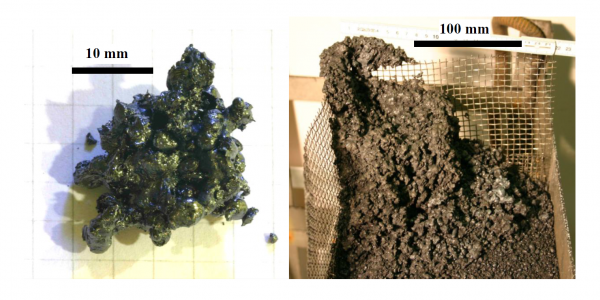
The aim of the DEFOR (Debris Bed Formation) program is clarification of the phenomena that govern formation of the debris bed in different scenarios of corium melt release into a deep water pool and quantification of the debris bed properties related to coolability.
Reactor cavity flooding is a cornerstone of severe accident management strategy in Swedish type BWRs. In a hypothetical severe accident with core melting and reactor vessel melt-through, it is assumed that the melt ejected into a deep water pool will fragment, quench and form a porous debris bed coolable by natural circulation. If natural circulation cannot remove decay heat produced by the debris, then dryout, reheating and remelting of the debris bed is expected to occur. Attack of molten core materials on the reactor containment base-mat presents a threat to containment integrity. Amount of the heat which can be removed by natural circulation from the debris bed is contingent, among other factors, upon the properties of the bed as porous media. Debris agglomeration and especially formation of “cake” regions can significantly increase hydraulic resistance for the coolant flow and thus negatively affect coolability of the debris bed. If melt is not completely solidified prior to settlement on top of the debris bed, then agglomeration of the debris and even “cake” formation is quite possible.
